Stay Warm, Reduce Energy Costs This Winter
Posted on by WestAIR Heating & Cooling
In a previous blog, we introduced energy-saving ideas to help keep your home cozy even on those blustery days. Since the weather outside is sure to gradually become frightful, we thought now would be a good time to offer new suggestions and reintroduce valuable tips to stay warm and reduce energy costs this winter.
Adjust Your Thermostat
When you’re asleep or away from home, turn down the thermostat to save energy. According to the U.S. Department of Energy, setting your thermostat seven to 10 degrees lower for eight hours can save as much as 10 percent on your heating bill.
Additionally, you can keep the thermostat slightly lower even when you’re awake by adding another layer of clothing. Grab a hoodie or a thick pair of socks and stay comfortable without having to crank up the heat.
Execute General Maintenance
Scheduling an annual tune up for your furnace will keep things running smoothly and efficiently. A system that’s well cared for will run better and last longer, saving you time, headaches, and money.
Between tune-up appointments, be sure to check and change the air filter. A clogged filter causes the furnace to run less efficiently and work harder to push air through, leading to undue wear and tear. This simple task also helps prevent operational issues and extends the life of your furnace.
Protect Your Water Heater
The water heater accounts for about 17 percent of energy usage. Insulating unit will help it run more efficiently, reduce heat loss, and keep costs down.
Check the Flooring
If you have tile or hardwood flooring, an easy way to save energy during the winter is to throw down a rug. That extra layer of insulation traps cold air underneath, keeping your home (and your feet) warmer while keeping energy use low.
Also, check to make sure the heat vents are clear and clean. Furniture, drapery, and debris can block the flow of heat coming from the vents. Unobstructed vents help keep warm air flowing and your furnace running at regular intervals.
Use the Sun’s Power
Give your furnace a break and take advantage of the sun’s warmth to help heat your home during the day. Open the blinds or curtains to let in some sun – and the heat. Your home will be toasty without your furnace doing any extra work. Just be sure to close the drapes as nightfall sets, to help keep that warm air from escaping.
Swap Out Light Bulbs
LED bulbs use about 75 percent less energy than standard incandescent bulbs. Swap out your old bulbs for LEDs this winter and watch the energy savings add up.
Block Out Cold Drafts
Installing storm windows over the existing windows can help seal off drafts, keeping the cold air out of your warm home. Otherwise, try shutting out cold drafts with a window insulation kit. Adding a thin layer of plastic film can help the house feel warmer and save up to 15 percent on energy bills.
Trust the Team at WestAir
The full-service team at WestAir Heating & Cooling is here to help you stay warm and reduce energy costs this winter. We provide high quality heating (and cooling) systems and solutions all year round as well as preventative maintenance to keep those systems running effectively and efficiently. Contact our knowledgeable experts today with your winter heating questions or to schedule service.
This entry was posted in Energy Savings,Heating,Winter and tagged Cut Costs, Energy savings, Save Energy, Winter, Winter Heating Tips
HVAC Checklist for Winter Trips 10 Tips
Posted on by WestAIR Heating & Cooling
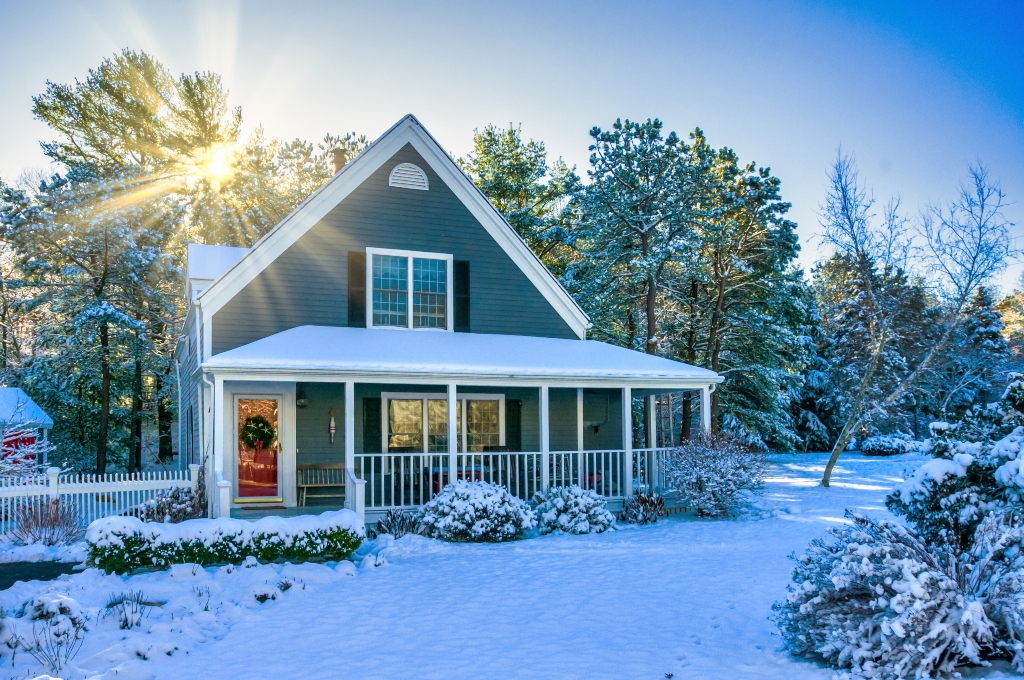
When winter hits in Minnesota, it’s easy to understand why some of us want a temporary escape to somewhere warm. Others might head up north for long ice fishing trips or to enjoy the winter wonderland. Whatever the reason to leave the house empty, you want to make sure it’s prepared for the weather. If you’re planning an extended vacation this season, follow this HVAC checklist for winter trips to help keep your home safe while you’re away.
- Turn the thermostat down but not off. There’s no need to keep an empty home comfortably warm, but you want to help protect against frozen pipes. It’s recommended to set the thermostat no lower than 55 degrees (closer to 60 during severe cold) and to open closet and cabinet doors so the warm air can reach the plumbing. For extended trips away from home, shut off the main water valve, drain remaining water by opening faucets, and leave them open until you return.
- Change or clean the air filter. Ensure your system has a fresh filter to prevent efficiency and performance issues while you’re away. And remember to change (or clean if reusable) your air filter monthly!
- Seal the home to trap the heat in and the cold out. The lower thermostat setting makes sealing warm air inside the home even more important. Check around windows, doors, and exterior walls and fix any potential leaks with caulk. And before you leave, lock all windows and doors to ensure a tight seal.
- Clean the home (especially dusting). Sealing the home naturally decreases ventilation. Clean the house to reduce the presence of dust and other airborne pollutants that impact indoor air quality, using extra care while vacuuming carpets and dusting hard surfaces.
- Clear/clean the area around the furnace/HVAC unit. Generally, there should be at least 3 feet of distance around your furnace or indoor air handling unit. Move any potential obstructions and clean the area, and ensure flammable items are kept far away from the unit.
- Ensure vents are clean and clear of obstructions. Similarly, make sure that the vents that feed the warm air to your home are dusted, cleaned, and free of obstructions – a closed or blocked vent will alter the system’s even distribution of air and decrease efficiency.
- Check your smoke and carbon monoxide (CO) detectors. Make sure they are clean and working properly with fresh batteries, and remember they should be tested weekly and cleaned at least monthly. You should refer to the manufacturer’s manual regarding maintenance and replacement schedules, but CO detectors should typically be replaced every five years and smoke detectors every 10.
- Unplug unnecessary appliances for extra safety and savings. Large appliances like TVs and sound systems, as well as smaller ones like coffee pots and toasters, will draw some electricity even when not in use. Unplug any appliances that don’t need power while you’re away to help reduce your utility bill.
- Make plans for monitoring. Consult your local HVAC company about any remote monitoring options available for your system. Before you leave home, notify close friends, family, and neighbors who can keep an eye out for any issues that you’ll be away. If you feel comfortable enough, consider giving a spare key to someone you trust so they can check on your home and provide updates.
- Schedule a professional inspection/maintenance service. The best way to ensure optimal safety, performance, and efficiency of your system is to schedule a professional inspection and maintenance service with an HVAC technician. Call the pros at WestAIR!
If you’re planning a fun, relaxing adventure away from home, the last thing you want to return to is a broken furnace, frozen pipes, or any other disaster around the house. Follow this HVAC checklist for winter trips to keep your home protected.
For all your residential heating and cooling needs, trust the experience and expertise of the professionals at WestAIR. Contact us to learn more.
This entry was posted in Furnace,Tips,Winter and tagged Home Safety, HVAC tips, Maintenance, Winter
7 Tips for Winter Indoor Air Quality Maintenance
Posted on by WestAIR Heating & Cooling
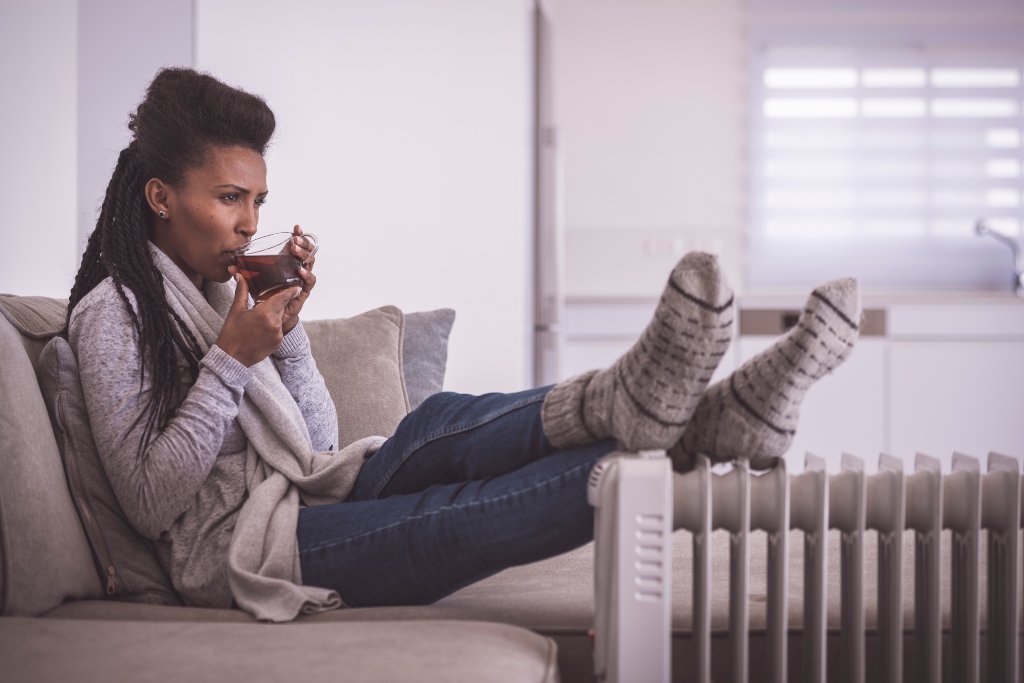
With the recent snowfall and chilly temps, there’s no denying that winter is almost here. Time to prepare! As heating season makes its way to Minnesota, we must remember to keep the air in our home clean as well as warm. Use this guide to winter indoor air quality maintenance to keep your family cozy, healthy, and happy throughout the season.
Poor Winter Indoor Air Quality: Causes and Effects
When cold weather hits, we seal our homes to prevent the warm air produced by our furnaces from escaping. While this helps increase comfort and energy efficiency, it also traps dust, pollen, and other airborne contaminants inside the home that then decrease indoor air quality. Common signs of poor winter indoor air quality include:
- Dry, itchy, or watery eyes
- Cold or flu symptoms: coughing, sneezing, nausea
- Heightened symptoms of asthma and other respiratory illness
- Fatigue and trouble concentrating
- Irritation of the nose and throat, particularly dryness
- Headaches
Tips for Winter Indoor Air Quality Maintenance
Escaping the bitter cold of Minnesota winters means spending more time inside our home, making clean indoor air crucial to our comfort and health. Thankfully, homeowners can improve and maintain air quality with these helpful tips.
- Clean regularly – Don’t let dust, mold spores, and other pollutants build up around the home. Dust hard surfaces and vacuum (using a vacuum with a HEPA filter if possible) at least weekly. Use non-toxic cleaners free of volatile organic compounds (VOCs), which are a major contributor to unhealthy air.
- Maintain a clean filter – Air filters keep dust and other debris from entering and harming your HVAC system, but must be maintained in order to prevent these irritants from making their way back into the air. Remember to change air filters monthly or clean if resuable.
- Schedule annual service maintenance – Ensure your heating system runs at peak performance and provides clean, warm air with professional maintenance service from a WestAIR HVAC expert.
- Have your ductwork cleaned – Dirt, dust, pet hair and dander, and other irritants settle inside your air ducts over time. Schedule duct cleaning service before winter is in full swing, and plan to do so annually.
- Enhance ventilation with an air exchanger – Sealing the home in winter leads to recycled, stale air inside. To resolve this, air exchangers deliver a continuous flow of fresh, filtered outdoor air while simultaneously exhausting unhealthy indoor air.
- Control humidity with a whole house humidifier – Humidity plays a crucial role for indoor air quality. Dry winter air can cause nose, throat, and skin discomfort, as well as damage wood fixtures and furniture over time. Installing a whole house humidifier will help maintain proper humidity levels in your home.
- Consider additional clean air solutions – Air cleaners work with your current system to remove excess dust and other irritants that decrease indoor air quality. Ultraviolet (UV) light purification systems utilize UV rays to eliminate odors harmful airborne pathogens like viruses, bacteria, mold, and VOCs.
This year has presented us all with new and unique challenges. But no matter how unpredictable 2020 has been, we know we can always plan for harsh winter weather here in Minnesota. We’re already seeing the temps drop and snow fall, so don’t wait! Use these winter indoor air quality maintenance tips to enjoy clean, comfy air inside your home this heating season.
For all your heating and cooling needs, trust the HVAC experts at WestAIR. Contact us today to learn more.
This entry was posted in Duct Cleaning,Furnace,Health Tips,Heating,Humidifier,Humidity,HVAC Maintenance,Indoor Air Quality,Tips,Winter and tagged Air cleaner, Air exchanger, Duct cleaning, Duct cleaning service, Heating, Heating Tips, Humidfier, Humidity, Humidity Management, HVAC tips, Indoor air quality, Indoor air quality solutions, Professional duct cleaning, Residential HVAC, Ventilation, WestAIR Heating & Cooling, Winter, Winter HVAC, Winter HVAC Tips, Winter Indoor Air Quality, Winter Indoor Air Quality Maintenance, Winter Tips, Winterize
Importance of Indoor Air Quality
Posted on by WestAIR Heating & Cooling
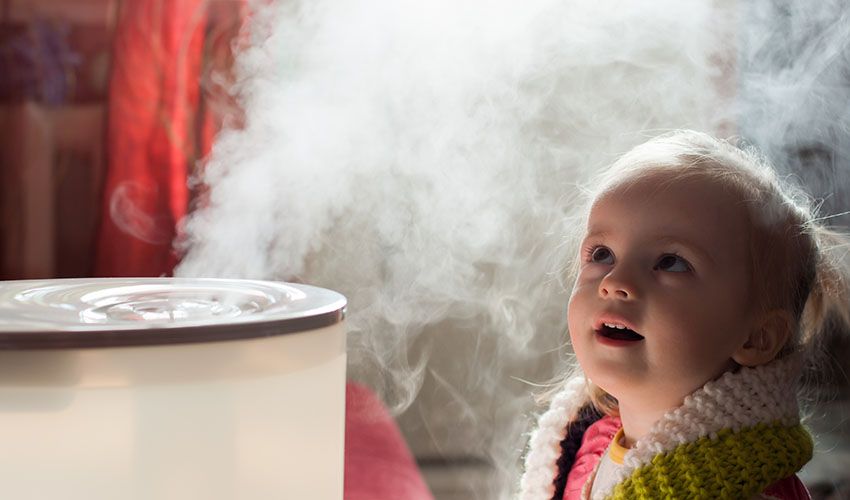
When we think about pollutants, many of us jump to an image of factories pumping smoke and toxins into the air. But what about on a smaller, more personal scale? Most of us spend more time in our own home than anywhere else, yet fail to consider the potential harm we face there. Let’s look at the importance of indoor air quality for family health.
Why Indoor Air Quality Matters
According to the EPA, the concentrations of pollutants in indoors are often two to three times what they typically are outdoors. Additionally, the EPA says that on average, Americans spend about 90 percent of their time indoors, with people who are more susceptible to pollution’s adverse effects (including children, older adults, and those with cardiovascular or respiratory disease) spending even more.
Causes/Sources
When it comes to indoor pollutants, most people are aware of secondhand smoke, radon, and carbon monoxide. Other threats to indoor air quality include:
- Combustion sources like wood, coal, and gas heating and cooking appliances
- Cleaning supplies releasing different chemicals into the air
- Building materials like insulation and pressed wood
- HVAC systems, especially if improperly maintained
- Pet hair, dander, and other allergens
- Inadequate ventilation
- Dust mites and pests
- Mold and bacteria
Outdoor air pollutants can also make their way inside the home through open doors and windows, ventilation systems, and cracks and seams. Chimney smoke can reenter and pollute the air, and volatile chemicals can sometimes enter via the water supply when cooking or showering. By simply entering the home, people inadvertently bring the soil and dust particles attached to their clothing along with them, as well as any pollutants attached to those particles.
Effects
The effects of indoor air pollutants vary both by person and based on length of exposure. Some immediate, short-term effects include:
- Irritation of the eyes, nose, and throat
- Coughing and sneezing
- Headaches, dizziness, and fatigue
- Upper respiratory congestion
- Triggered or worsening asthma symptoms, including asthma attacks
Long-term and more severe health effects include:
- Respiratory disease, heart disease, and cancer
- Nausea and vomiting
- Fever and chills
- Myalgia (muscle pain)
- Nose bleeds
- Difficult or painful breathing
If you experience any of these symptoms, contact your healthcare professional or dial 9-1-1 in case of emergency. Consult your local HVAC professional about improving your home’s air quality.
Tips
Whether we’re escaping hot and humid summer days or the bitter cold of winter, Minnesota residents spend plenty of time indoors year-round. Maintaining clean indoor air is crucial, and here are a few basic tips to get you started:
- Let in fresh air: Open windows and doors when possible and consider purchasing an air exchanger to help replace stale indoor air with during the winter.
- Clean regularly: Vacuum carpets and rugs one to two times each week and dust hard surfaces weekly.
- Wash bedding weekly and consider using dust mite-proof covers on pillows, mattresses, and box springs.
- Have your ductwork cleaned and change your filter (or clean if re-usable) monthly.
- Invest in an air cleaner to efficiently trap and remove airborne pollutants.
- Declutter your living space to avoid trapping and holding dust.
WestAIR Heating & Cooling understands the importance of indoor air quality, and we want to help keep your family safe and healthy. We offer professional duct cleaning as well as sale and service of air exchangers, air cleaners, whole house humidifiers, and replacement filters.Contact us to learn more and schedule service today.
This entry was posted in Duct Cleaning,Health Tips,Indoor Air Quality,Tips and tagged Effects of Indoor Air Pollutants, Effects of Indoor Air Quality, Effects of Poor Indoor Air Quality, Family Health, Family Safety, Heating, Heating System, Home Heating, Home Safety, Homeowner Education, Homeowner Tips, HVAC Safety, Importance of Indoor Air Quality, Indoor air, Indoor Air Pollutants, Indoor air quality, Indoor air quality solutions, Indoor Air Quality Tips, Winter
Ready to Replace: The Benefits of a Furnace Upgrade
Posted on by WestAIR Heating & Cooling
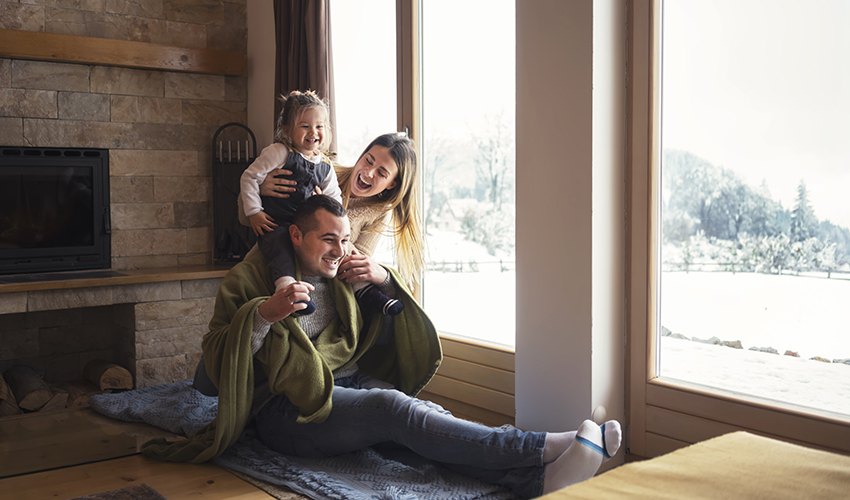
How old is your furnace? According to Consumer Reports, a furnace’s average life expectancy is 15 – 20 years (depending on the fuel type). Age is just one indicator that it’s time to replace your heating system, and doing so can do more than just ensure a cozy home all winter. Read on to learn more about the benefits of a furnace upgrade.
Increased Energy Efficiency
Modern furnaces offer significantly more efficiency than older ones, which ultimately means lower utility bills. This is measured by the system’s annual fuel utilization efficiency (AFUE) – the amount of the system’s annual energy consumption that actually produces heat. Older systems score between 56 percent and 70 percent AFUE, meaning only 56 to 70 percent of the energy consumed becomes heat for the home. Modern high-efficiency heating systems offer 90 percent to 98.5 percent AFUE, helping you use less and save more.
Compatible with Programmable Thermostat – More Savings
Programmable thermostats can save you up to 33 percent on annual heating and cooling costs. You can schedule temperatures ahead of time, so the system automatically turns down when you’re away to save energy and back up when you’re at home for comfort. Properly used along with your new energy-efficient furnace, a programmable thermostat can help you maximize your savings.
Optimal Comfort Throughout the Home
Advanced technology in today’s furnaces helps provide stable, even temperatures throughout the home, eliminating cold spots and ensuring comfort.
Some modern features and benefits:
- Zoning systems let you regulate the temperatures in each individual room, making sure the heat is utilized how you want.
- Variable-speed operation means the blower motor has multiple speed settings. It will work at high capacity during periods of extreme cold to circulate more warm air throughout the house, and low capacity on more mild days to use less energy. Older systems have fixed-speed motors that operate at full capacity whenever they run.
- Two-stage furnaces will operate in the first stage (about 65 percent of full capacity) until outside temperatures drop low enough, in which case it will kick into stage two and produce more heat to fulfill the additional requirements. As a result, these systems enhance efficiency and provide a steady flow of warm air for comfort on those extra-cold days.
Improved Safety
Due to normal wear and tear over time, an older furnace can develop a crack in its heat exchanger and leak poisonous carbon monoxide (CO) into the home. Common signs of a CO leak include:
- Weak, flickering, and/or yellow burner flame
- Soot streaks near furnace
- Moisture on windows, walls, or other cold surfaces
- Rusting on flue pipes/other pipe connections or appliance jacks
- Small water leak at base of chimney, vent, or flue pipe
Signs of human exposure can be mistaken for common illnesses:
- Flu-like symptoms
- Headaches
- Nausea
- Disorientation
- Burning feeling in nose/eyes
If you notice any of these signs of CO poisoning, contact your local HVAC specialist immediately. Installing a new furnace will help keep your home feeling cozy through the winter without putting your family in danger.
Better Indoor Air Quality
Your HVAC system is also responsible for the air quality of your home, and keeping a clean air filter is key. However, even with a clean filter, an older furnace can cause excessive dust, allergens, and dry, stale air in your home.
Enhanced Reliability
Frequent issues and expensive repairs to your furnace add up quickly, and they also leave your home with insufficient or no heat until fixed. While you should have your system serviced annually, having to call for a repair shouldn’t be a regular occurrence. A new furnace gives you the peace of mind that your family will be comfy all winter long.
While important, keeping your home warm is only one of the benefits of a furnace upgrade. We rely on our home’s heating system a lot here in Minnesota, so it’s important to make sure yours is up to the task. Don’t wait until it’s too late! Have your system inspected today and see if this is the year you replace.
WestAIR installs high-efficiency Rheem furnaces because they use advanced, state-of-the-art technology to offer the best in energy-efficient home heating. From HVAC service to system replacements, our experts are here for all your heating and cooling needs.Contact us for more information.
This entry was posted in Furnace,Heating,Indoor Air Quality,Tips,Winter and tagged Benefits of a Furnace Upgrade, Energy efficiency, Furnace replacement, Furnace replacement from Rheem, Furnace Upgrade, Heating, Heating System, Heating System Upgrade, High-Efficiency Furnace, Home Heating, HVAC Upgrade, Indoor air quality, Rheem Furnaces, Rheem Pro Partner, WestAIR furnace replacement, Winter
Winter Energy-Saving Tips
Posted on by WestAIR Heating & Cooling
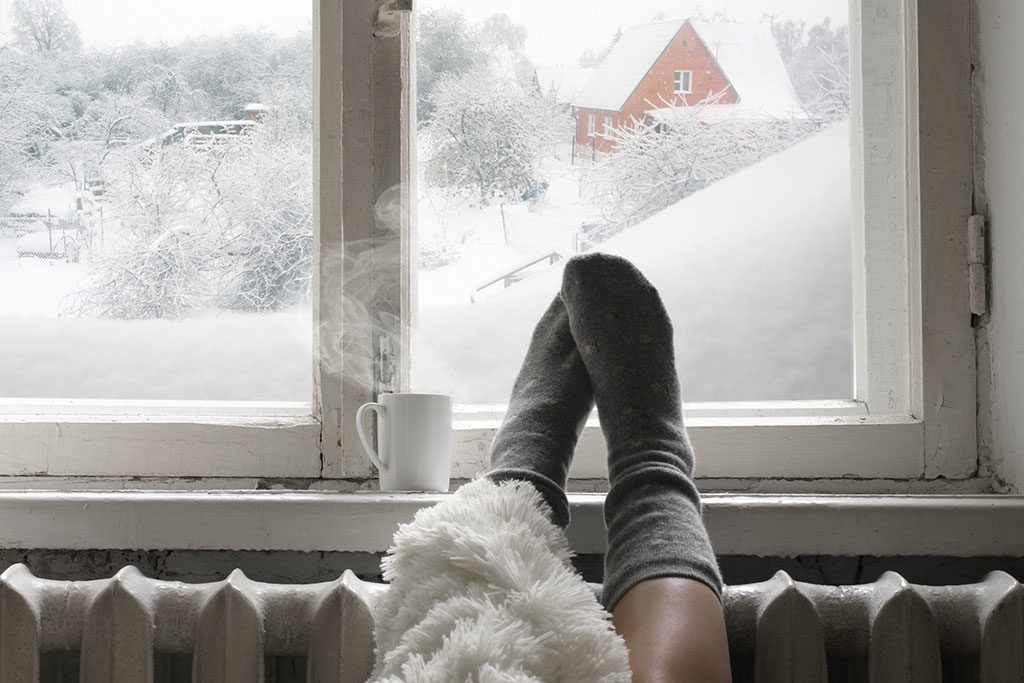
It’s the season of heavy snow, biting wind, and frosty windows. In the freezing temperatures, you may notice your energy bills spike as you try to heat your home. WestAIR is here to help. Follow our winter energy-saving tips to keep cozy:
- Insulate your windows with heavy curtains. Keep the curtains closed at night and open in the day for free solar heating.
- If the warmth in your home sneaks away the moment the furnace cycles off, you may be losing heat through drafty windows. Use caulk, weather stripping, or draft stoppers to seal leaks around doors and windows.
- Seal air leaks in plumbing penetrations, gaps around the chimney, recessed lights, and unfinished spaces behind cupboards and closets. Insulate the attic or crawl space and other areas of the home according to recommendations for your region.
- Reverse ceiling fans so they run clockwise. Hot air rises, so the fans will push the warm air back down to you. Running them in the winter can save up to ten percent in energy costs.
- Move furniture and other items away from vents so the heat can travel from the ductwork to your rooms.
- If you have a wood-burning fireplace, keep the damper closed when it’s not in use so the warm air doesn’t escape out the chimney.
- Change filters. Dirty, clogged filters make your heating system work harder, which puts stress on your equipment and increases energy bills.
- Avoid using exhaust fans, which will suck out the warm air.
- Recycle oven heat. When you finish baking something and turn the oven off, leave the door open to warm the kitchen.
- Install a whole house humidifier to combat the dry air. Relative humidity makes your home feel warmer at lower temperatures, so you can turn the thermostat down and still feel comfortable.
- Turn the thermostat down when you sleep and when you leave, but no more than five degrees. Your furnace may spend more energy starting up again than it does keeping the home within a steady temperature range.
- Invest in a programmable thermostat, so it can adjust the temperatures for you. According to Minnesota Energy Resources, you could save up to $180 dollars a year just by upgrading this simple accessory.
- Don’t heat unnecessary spaces. Learn how you can control where the heat goes in your home with automatic zoning.
- Schedule service for your heating system.
WestAIR is committed to keeping your home warm this winter. We understand the stress that Minnesota winters place on your heating system and pocketbook. Check out our Heating 101 guide for more seasonal HVAC tips.
Contact us for more information.
This entry was posted in Energy Savings,Heating,Tips and tagged Automatic zoning, Energy efficiency, Energy-saving tips, Heating, Heating 101, HVAC, HVAC tips, Indoor air quality, Save money, Seasonal hvac tips, Thermostat, Whole house humidifier, Winter
Holiday Home Safety Tips
Posted on by WestAIR Heating & Cooling
 The holidays are exciting, filled with gift shopping, decorating, cooking, hosting the extended family, or traveling to a Christmas getaway. But don’t overlook small details that are mishaps waiting to happen. From the ten-year-old string of decorative lights wrapped around your banister to the poisonous poinsettia plant sitting on your dining room table, the festivities bring many hazards to your home. Have an enjoyable and accident-free Christmas season with these holiday home safety tips:
The holidays are exciting, filled with gift shopping, decorating, cooking, hosting the extended family, or traveling to a Christmas getaway. But don’t overlook small details that are mishaps waiting to happen. From the ten-year-old string of decorative lights wrapped around your banister to the poisonous poinsettia plant sitting on your dining room table, the festivities bring many hazards to your home. Have an enjoyable and accident-free Christmas season with these holiday home safety tips:
Electrical threats
Before you hang up electric decorations, inspect them for damage. Look for cracked sockets, loose connections, or frayed cords. An exposed wire could light up your Christmas tree in flames. Never overload outlets or connect more than three strings of electrical lights. They could trip a breaker or start a fire.
Fire
You should always check your fireplace and chimney before you light it. Santa may not be peeking down at you from the roof, but there could be debris blocking smoke and creating a fire hazard. If you have a real Christmas tree, water it daily, and don’t put it too close to the fireplace. Keep combustibles at least three feet from heat sources and never block exits in case of a fire.
Decorating danger
In a quest to outdo last year’s Christmas décor, many homeowners take decorating to new heights, quite literally. If you plan to hang sparkling ornaments or lights in high places, don’t climb or stand on furniture. Use a proper ladder and have someone support the base if you need to hang decorations beyond your normal reach.
Theft
Try not to order anything online to be shipped to your home if you plan to be away for the holidays. Thieves can easily run up and snatch retail packages on a porch. Don’t leave large displays of holiday gifts near windows where passersby can easily see them. If possible, ask a neighbor to keep an eye on your home while you are away so you don’t have to worry about holiday theft.
Cold weather
If you plan to be away for the holidays, take steps to prevent frozen pipes. Basement, attic, and garage pipes are most susceptible to freezing and bursting in cold temps, causing significant water damage in a matter of hours. Make sure to close your garage door when you leave to keep the cold air out. Open kitchen and cabinet doors so the warmer air throughout your home will circulate and reach the pipes in your walls. Set the thermostat to a temperature no lower than 55 degrees.
WestAIR Heating & Cooling offers programmable thermostats with vacation-hold settings so you can easily stay in control of your heat while you are away. We can install a gas fireplace so you don’t have to worry about the decorations, Christmas tree, or wrapping paper falling into the hearth and catching fire. Contact us to learn more about your heating options this holiday season.
This entry was posted in Winter and tagged Garage, Heating, Holidays, HVAC, Thermostat, Winter
10 Signs You Should Replace Your Furnace
Posted on by WestAIR Heating & Cooling
If you’re like most homeowners, you want to get the most out of your furnace and avoid the cost of replacement for as long as possible so you make sure it’s outlived its parts. When is it time to say goodbye to your furnace and buy a newer model? The excessive amount of money you put into utility bills and repairs for your old furnace may indicate it’s time for an upgrade. Though expensive, a newer model can increase your home comfort, efficiency, savings, and safety in the long run.
Signs you need a new furnace
The average furnace will last 15 to 20 years if it is installed properly and regularly serviced. But you’ll have to get a new one eventually, and a newer model can save up to 20 percent in energy. Here are 10 signs that you may need to replace your furnace:
- If you’re calling for repair services too often.
- If your furnace repair costs 50 percent or more than it would to replace.
- If it’s over 15 years old.
- If your furnace is making loud sounds (rattling, popping, humming, or screeching).
- If your furnace is short cycling.
- If your heating bill has increased even though you aren’t changing the thermostats.
- If you set the thermostat, but your home is not heated evenly.
- If you notice soot around the registers. Older furnaces spew dust, dirt, or rust particles.
- If there’s a crack in the heat exchanger. Carbon monoxide could be leaking and poisoning your home.
- If you notice rust, cracks, or corrosion on or around furnace components.
Why upgrade my furnace now?
With new technology, you can easily and conveniently regulate the temperatures in your home and be more comfortable, while saving energy. Buying a new furnace can be a planned home improvement or a panic replacement. Don’t wait until it breaks down in the freezing cold of winter. In your desperation for a warm house, you may not take the proper time to research and choose a furnace with the best deals.
But first, have an HVAC technician evaluate your entire heating system. Maybe it only needs a simple repair, like a new filter or thermostat. The WestAIR service team is here to help you make a sound decision so you can prevent costly breakdowns and save money. When it comes time to replace your furnace, our HVAC technicians will help you choose the right make and model for your home. We recommend Rheem® furnaces for their energy savings, advanced features, and reliability. Contact WestAIR today for more information.
This entry was posted in Furnace and tagged Energy efficiency, Energy savings, Furnace, Heating, Replace furnace, Rheem, Save money, Thermostat, Tune-up, Winter
Extend the Life of your HVAC Equipment
Posted on by WestAIR Heating & Cooling
Having a working furnace and air conditioner is crucial during the winter and steamy summer days. Don’t run it and forget about it, as wear and tear is inevitable. You can save on costly replacements or repairs through proper maintenance. Extend the life of your HVAC equipment by following these steps.
Heating & Cooling Tips
1. Follow manufacturer instructions.
2. Have your systems checked every year by a qualified service technician. It’s best to schedule maintenance in the spring and fall. Technicians are busy in the hot and cold months, and you don’t want to wait until there’s something wrong.
3. Check your filters. Replace your filters every 30 to 60 days. If you have a permanent filter, clean it with mild detergent every 30 to 60 days. This is the most important step to increase the life of your equipment. Dirty filters make heating and cooling units work harder, which will shorten the life with use.
4. Keep your doors and windows closed. Your air conditioner and heater will work harder when there is more air to circulate. Make each space with ventilation smaller by closing your doors. This is the also the case for houses with boilers or window air conditioners. Rather than labor to regulate air temperature in the whole house, your a/c only needs to cool the individual room. With a boiler system, it’s efficient to close off rooms without a radiator.
5. Caulk and weather-strip air gaps on windows. This step is good for your wallet and your HVAC equipment. Old houses are especially drafty, so locate the air leaks by finding damaged glazing or old caulking. Another trick is to turn off all appliances and light an incense stick in each room. Turn on your exhaust vent if you have one. Then hold your incense stick close to windows, doors, and walls for a noticeable change in the smoke. If you have drafty doors, invest in some door draft blockers.
6. Use your thermostat. It’s a myth that you should keep your thermostat at a steady temperature. Most of the time, your furnace will be working harder to maintain the heat at a steady rate. Instead, program your thermostat for a comfortable temperature while you are home and ten degrees less while you are away. However, fidgeting with the thermostat will be less efficient, even if it seems harmless to put it up or down a degree or two. Keep it on a consistent schedule.
Energy Efficiency
Winter
1. Open window shades when windows are facing the sun. Let the sun warm your house naturally, putting less work on your furnace. The vitamin D is good for you this time of year!
2. Take advantage of using your oven. Slow cook your chicken and oven roast your veggies. The extra warmth will give your furnace a break. Your oven will be working two jobs at once without the added cost.
Summer
1. Close window shades facing the sun. Opposite of wintertime, you want to block the sun from adding extra heat to your house. Make sure to put your plants outside so they don’t suffer from the lack of sun!
2. Be smart with your other appliances. When you are doing laundry, hang up your clothes on a line to save energy or strain on your a/c. Why work an appliance that uses heat when it’s already hot outdoors? Washing clothing shouldn’t be an issue, though, if you stick to cold water. If it’s humid out, dry your clothes during the coolest part of the day: around dawn. Same goes for dishwashers.
3. Use your exhaust fans when cooking. Whether you plan on using the oven or stovetop for dinner, turn on the exhaust fan to let out the excess moisture and heat. Or maybe fix a cold sandwich or salad. In return, your air conditioner won’t have to work as hard! Same goes for your bathroom, but not everyone likes cold showers!
Annual Service Maintenance
Spring is around the corner, so it’s time to schedule your maintenance visit with WestAir Heating & Cooling.
Our technician’s maintenance list will take care of most things you cannot do yourself to ensure your equipment is running smoothly for summer and winter:
Annual Service Maintenance list:
• Clean furnace and check operation/filter
• Clean air conditioner and check operation
• Clean outdoor condenser and check refrigerant level
• Clean air exchanger filters and core
• Check radiant in-floor pressures and go over system
• Check humidifier filter and drain line
• Check unit heater operation
• Clean fireplace and check operation
Contact us for more information on heating, cooling, or our service maintenance!
This entry was posted in AC,Air Conditioning,Cooling,Furnace,Heating,Winter and tagged A/C, A/C, Air conditioner, Air filters, Air quality, Annual check-up, Caulk, Clogged filter, Cold air, Cooking, Cooling, Cost, Dirty, Dishwasher, Door draft stopper, Doors, Drafty windows, Dryer, Efficiency, Energy efficient, Exhaust fan, Fall, Filter, Filters, Furnace, Furnace filter, Heater, Heating, HVAC, Laundry, Maintenance, Quality, Save money, Shower, Spring, Summer, Sunshine, Sustainability, Thermostat, Windows, Winter
Why You Should Change Your Furnace Filter Often
Posted on by WestAIR Heating & Cooling
Changing your furnace filter seems to be an easily forgotten task. HVAC companies try their hardest to remind you to do these things, but do you know why you should change it more often than you think?
Maintenance
Getting an oil change for your car is as important as changing the furnace filter for your house. It simply extends the life of your equipment. A dirty filter means that less air is circulating, which then means that your furnace is working harder to keep your house warm. Over time, having a furnace go into overdrive for too long can overheat the system or break down the entire unit. This is not something you do want to deal with in subzero temperatures.
A little dirt can do a lot of damage. If your furnace filter is dirty, not only will it make your HVAC unit work harder, but it will also make your heating bills go up over time. All the extra effort that this heater is putting out digs a deeper hole into your wallet. While a new furnace filter might cost money, ignoring it will cost more in your gas bill, except you’re doing more damage than good by trying to be frugal.
Air Filter Quality
Skip the fancy furnace filters. A furnace filter is designed to protect your furnace, not improve indoor air quality. Some people swear by these special filters, but you’ll most likely have to run your furnace fan year-round to get the benefit of a high-efficiency filter. Extra work and extra care (replacing them often) will cost you more in the end.
There is a happy balance that you could achieve between cost and efficiency. For homeowners, we recommend purchasing a MERV 7 or 8 pleated filter, which traps 80 to 95 percent of air particles. If you are looking to get rid of pollutants and breathe cleaner air, consider getting an air cleaner instead.
When to call your HVAC technician
– Unit fails to turn back on
– Noisy or slow fan
– Bent fins
– Coils are extra dusty
Remember to change your furnace filter every month when fan is in use for heating and cooling seasons.
Got more furnace questions? Call us at (763) 498-8071.
This entry was posted in AC,Air Conditioning,Cooling,Energy Savings,Furnace,Heating,Indoor Air Quality,Tips and tagged Air filters, Air quality, Clogged filter, Cold air, Cost, Dirty, Efficiency, Filter, Filters, Furnace, Furnace filter, Heater, Heating, HVAC, Maintenance, Quality, Save money, Winter
Subscribe to Our Blog
With RSS feeds, you don't have to visit our site everyday to keep up to date. Simply subscribe to our blog via RSS or Email and our posts will come to you!
Search Blog Posts
Categories
Archives
- April 2024 (1)
- February 2024 (1)
- January 2024 (1)
- February 2023 (1)
- January 2023 (1)
- December 2022 (1)
- November 2022 (1)
- October 2022 (1)
- September 2022 (1)
- August 2022 (1)
- July 2022 (1)
- June 2022 (1)
- May 2022 (1)
- April 2022 (1)
- March 2022 (1)
- February 2022 (2)
- December 2021 (1)
- November 2021 (1)
- October 2021 (1)
- September 2021 (1)
- August 2021 (1)
- July 2021 (1)
- June 2021 (1)
- May 2021 (1)
- April 2021 (1)
- March 2021 (2)
- January 2021 (1)
- December 2020 (1)
- November 2020 (1)
- October 2020 (1)
- September 2020 (1)
- August 2020 (1)
- July 2020 (1)
- June 2020 (1)
- May 2020 (1)
- April 2020 (1)
- March 2020 (1)
- February 2020 (2)
- November 2019 (1)
- August 2019 (2)
- June 2019 (1)
- May 2019 (1)
- April 2019 (1)
- March 2019 (1)
- February 2019 (1)
- January 2019 (1)
- December 2018 (1)
- November 2018 (1)
- October 2018 (1)
- September 2018 (1)
- August 2018 (2)
- July 2018 (1)
- May 2018 (1)
- April 2018 (1)
- March 2018 (1)
- February 2018 (1)
- January 2018 (1)
- December 2017 (3)
- November 2017 (2)
- October 2017 (2)
- September 2017 (2)
- August 2017 (1)
- July 2017 (2)
- June 2017 (3)
- May 2017 (2)
- January 2017 (4)
- November 2016 (1)
- September 2016 (3)
- July 2016 (2)
- June 2016 (2)
- May 2016 (4)
- April 2016 (1)
- March 2016 (2)
- February 2016 (2)
- January 2016 (1)
- August 2015 (1)
- July 2015 (1)
- June 2015 (3)
- May 2015 (1)
- July 2014 (2)
- June 2014 (1)
- April 2014 (1)
- March 2014 (1)
- February 2014 (2)
- October 2013 (1)
- May 2013 (1)
- March 2013 (1)
- February 2013 (1)
- August 2012 (1)
- July 2012 (2)
- June 2012 (2)
- May 2012 (2)
- March 2012 (1)
- February 2012 (1)
- December 2011 (1)
- November 2011 (1)
- October 2011 (1)
- September 2011 (1)
- August 2011 (1)
- June 2011 (1)
- May 2011 (1)
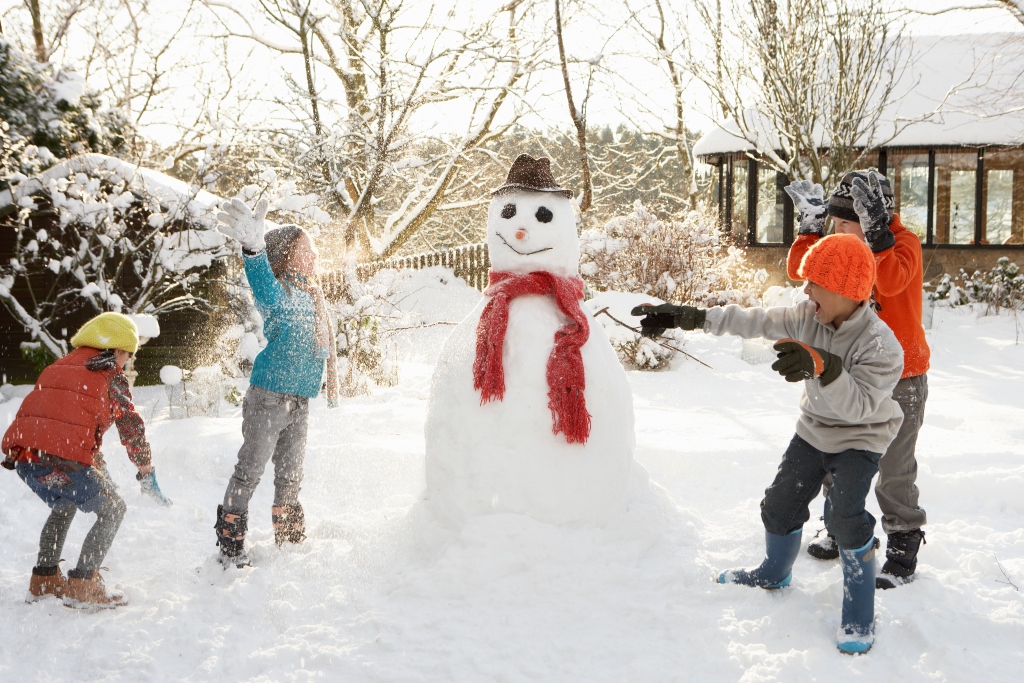

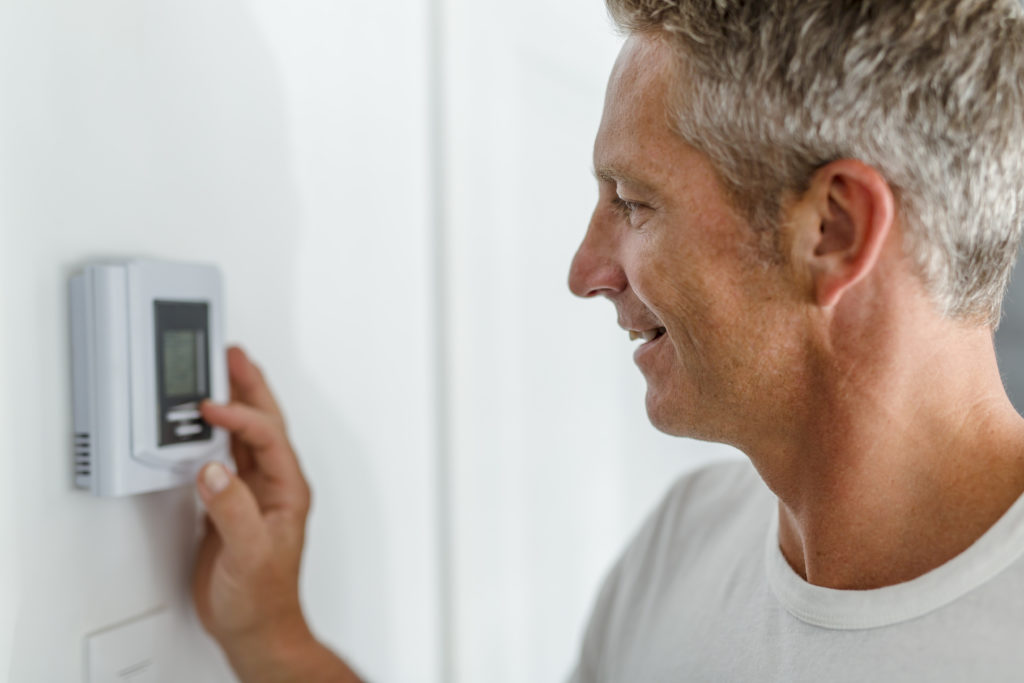
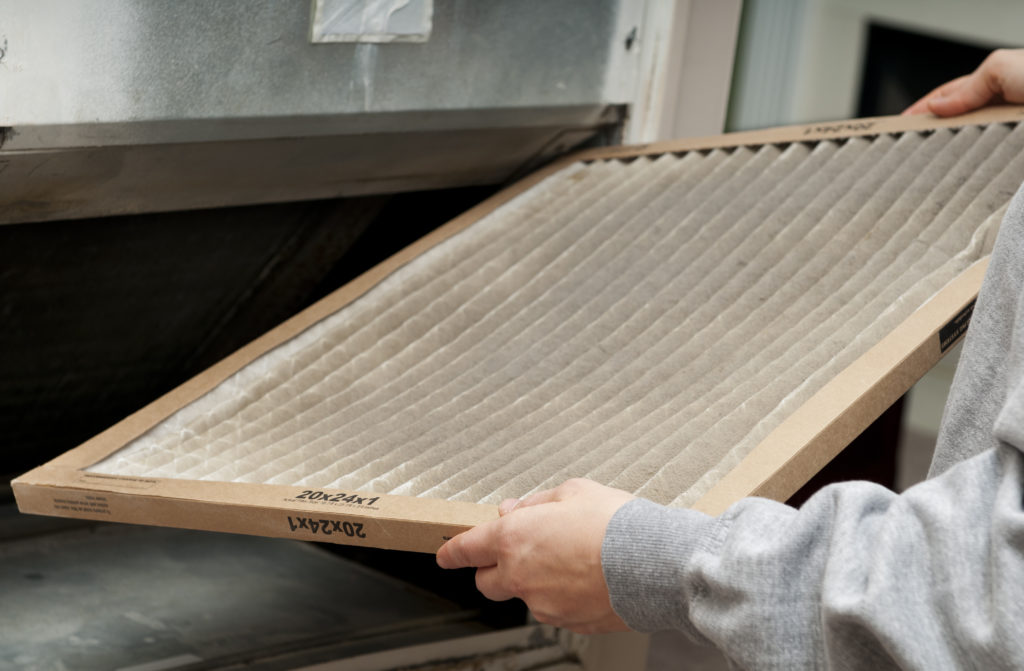
 Subscribe
Subscribe Subscribe
Subscribe